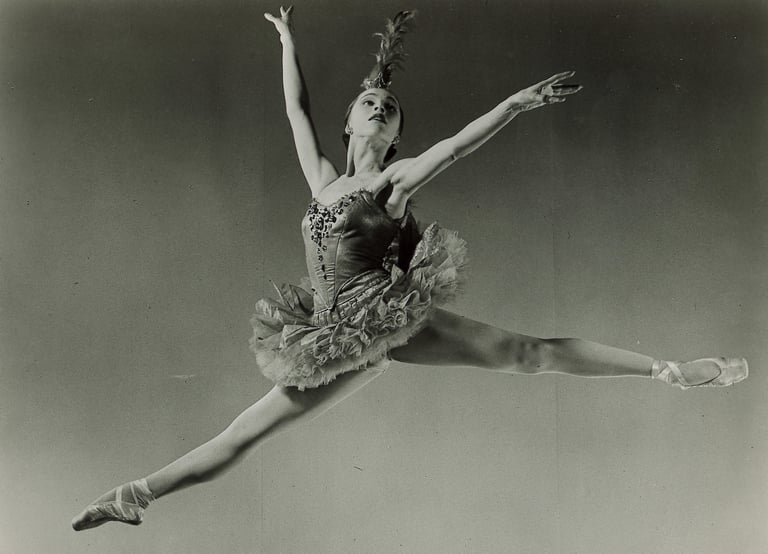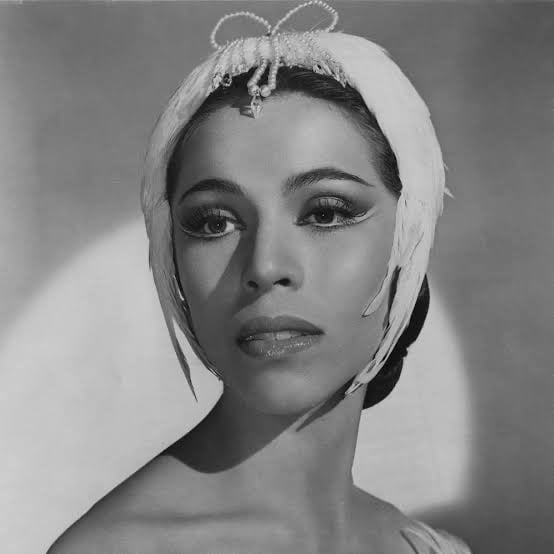The First American Prima Ballerina You Didn’t Know — Maria Tallchie
Maria Tallchief wasn’t only a dancer—she was an agent of transformation, bridging cultures, breaking ceilings, and inspiring generations. Here's a deeper dive into her life, her words, and why her journey resonates so profoundly today.


Imagine a young Osage woman who not only conquered New York but redefined American ballet—becoming a celestial presence onstage. Born in 1925 in Oklahoma, Maria Tallchief—originally Elizabeth Marie Tall Chief—was a force of nature in dance and identity
Roots and Rise
Born Elizabeth Marie Tall Chief on January 24, 1925, in Fairfax, Oklahoma, Maria grew up on Osage Nation land, where she felt both privilege—the town belonged to her father—and the weight of heritageen.wikipedia.org+15en.wikipedia.org+15youtube.com+15. Yet early life wasn’t easy: raised in a world between richness and reservation, she later reflected on childhood struggles with identity and belonging.
At age 12, a move to Los Angeles brought rigid training under Bronislava Nijinska, a Russian émigré whose discipline forged Maria’s artistry. Maria recalled Nijinska’s words:
“When you sleep, sleep like a ballerina. Even when you wait at the bus stop, stand like a ballerina.”en.wikipedia.org+5es.wikipedia.org+5en.wikipedia.org+5
This became more than instruction—it was a philosophy of presence.
Forging an Artistic Identity
At 17, Maria joined Ballet Russe de Monte Carlo, and her rise began amid intense rigor: “I was always doing a barre… always giving it my all in rehearsals,” she wroteyoutube.com+1goodreads.com+1nationalgeographic.com+15en.wikipedia.org+15en.wikipedia.org+15. When choreographer George Balanchine entered her life, it wasn’t just romance—it was evolution.
Balanchine’s challenge:
“If only you would learn to do battement tendu properly you wouldn't have to learn anything else.”newyorker.com+1biography.com+1en.wikipedia.org+1es.wikipedia.org+1
She later described the transformation:
“My body seemed to be going through a metamorphosis.”vsaworld.com+2en.wikipedia.org+2es.wikipedia.org+2
This radical re-engineering of technique became the bedrock of her artistry.
Embodying American Ballet
As premier ballerina at New York City Ballet (1947–60), her portrayal of The Firebird wasn’t merely performance—it was revelation. Ashley Wheater captures it well:
“…aside from technical polish there is a burning passion… in her interpretation of Balanchine’s ‘Firebird,’ she was consumed both inside and out.” newyorker.com+6en.wikipedia.org+6en.wikipedia.org+6
She wasn't performing, she was igniting.
As Sugar Plum Fairy in The Nutcracker, she helped transform a seasonal piece into a national tradition—underscoring that American ballet had found its champion.
Wisdom and Words That Resound
Her reflections are as timeless as her performances:
“A ballerina takes steps given to her and makes them her own. Each individual brings something different to the same role.” newyorker.comazquotes.com
This underscores her belief in artistic authenticity.
On her relationship with identity, she said:
“Above all, I wanted to be appreciated as a prima ballerina who happened to be a Native American, never as someone who was an American Indian ballerina.”www2.internationalinsurance.org+2es.wikipedia.org+2en.wikipedia.org+2
That was her quiet defiance—her insistence on choice in how she was seen.
And this gem on perfection:
“If anything at all, perfection is not when there is nothing to add, but when there is nothing left to take away.” passiton.com+5azquotes.com+5annartgallery.blog+5goodreads.com+1goodreads.com+1
She taught us that excellence is distillation, not accumulation.
Why Her Story Inspires Us
She never changed her name, identity, or heritage to fit an established mold
.Precision & Power: Blended athletic strength with expressive nuance—balancing fire and form
.Barrier Breaker: First Osage ballerina, first American at Paris Opera and Bolshoi—she showed the world what American women could achieve.
Artistic Heirloom:Through her words and performances, she passed on a legacy of integrity and innovation.
A Legacy That Lives
After retiring, she became a teacher, director, and advocate—co-founding Chicago City Ballet, teaching Balanchine technique, and supporting Native American youth. Her commitment to preserving art with authenticity left an enduring impact womenshistory.org+4en.wikipedia.org+4newyorker.com+4.
Final Thought
Maria Tallchief danced not just steps, but truths—to herself, to her art, and to the world. She showed that identity and excellence aren’t enemies, but partners. She wasn’t just America’s first prima ballerina—she was its first authentic one.
Let her journey inspire you: bring your own truth to every endeavor you pursue.


